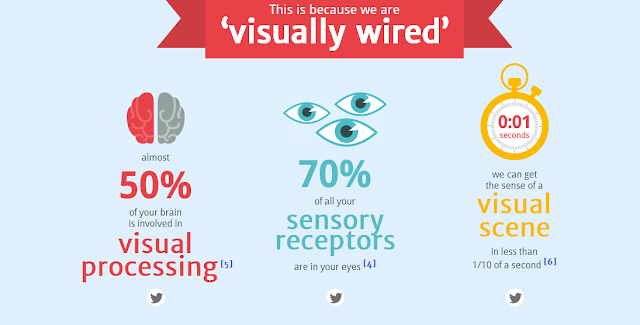How to create content for your blog
If creating content for your blog literally feels like it is sucking the charm out of your life then you are not alone. This constant debate has plagued every marketer / blogger out there:
What do I write about?
Will my readers find this content interesting?
Am I doing enough to create unique high quality content?
All this can cause even seasoned bloggers to abandon the content-writing cause midway - but worry not - I have few strategies & tips and in no time, you will be posting great content on your blog, continuously.
As a newbie blogger, my constant worry was “What should I post about” leading to lots of frantic strategizing and brainstorming.
Let's break things down a bit into bite-sized components here. You have 4 things you need to tackle while writing a blog post
- Headline
- Content: Outline + Type + Headings + body
- Images
- Call to action
Let's begin with content:
1.1 Content: Outline
Typically, I’d begin with a work-in-progress headline and begin putting my thoughts together. To help improve my writing, I recently bought fabulous book by Ann Handley, Everybody Writes (grab a copy today if you want to enhance your writing skills). It is a really hands-on guide on how to take your writing up a notch.
On that note, while you write, you might want to consider the following:
- Are you adding anything new to the body of work that exists on the topic?
- Has this perspective been handled before?
- Will this content generate conversations and discussions?
- In this topic that you have chosen, what is it that your audience wants to know?
Once you have identified your broad outline, let's speak a bit about uniqueness.
Sadly, around 25-30% of the content on the internet is duplicate. Plagiarism is a bigger problem, still. However much unique content every blogger wants to write, duplicate content and plagiarism creep in invariably (and sometimes deliberately). Utimately, these short term methods short charge the most ardent of bloggers.
Would you appreciate a website peddling stale third party content? Creating fresh unique content, post after post, is going to be difficult. So - what do you do? You recognize the value that you bring to the table.
Sure - this story has been told countless times before. But it has never been told from your perspective, your voice. Do your research but give your own unique interpretation to the topics that you choose.
For example, you know that your readers would like to know more about email marketing, but hey - it is a vast topic and what importantly, what new can you possibly write about?
Few (new or ) unique perspectives
- Email marketing in <your industry> for <skill level: beginners / intermediate / experts>
- Email marketing for the holiday season <in your industry>
- Email marketing for the <demographic> in your country
This will be much more unique as opposed to the following
- Email marketing 101
- Email marketing: Tips and Tricks
- Email marketing: Techniques
If you write the above posts, then you’d have to post more authoritative content than anyone else in this genre to get noticed - not an easy task at all. Not that you can’t and shouldn’t do it - but you have a much better chance of standing out in your niche when you are starting out.
Once the topic / area is finalized, let’s work on the content type. What content type do you want to write?
1.2 Content: Type
You may find that structuring your content around one of these types might help. Do you want to write a “How To” article? Or do you want to write a “Behind the Scenes” - you can cover the same topic from different perspectives.
For example
How to Rock Monochromes in Fall/Autumn: Trends from Europe
Behind the Scenes: The Best of Fall / Autumn Monochrome Trends from Europe
The first one could be more strategies and tips, the second one would be more anecdotal. You can choose any of the content types and tailor your content according to your audience type.
1.2. (A) Action oriented
- How to
- Where to find
- Top techniques
1.2. (B) Slice of life
- Behind the scenes
- Tete-a-tete
- Fireside chat
- Things I learned
- A day in the life of
1.2. (C) Observations
- Reviews
1.2 (D) Interactive
- Coaching sessions
- Live Chat
- Challenges
Once you have identified the topic and the content, the next is to address our work-in-progress headline.
2. Headlines
Your post headline is a like a virtual storefront - has to be inviting but simple.
Consider this
Customer Service: Nirvana or Necrosis [Eeeeeek - I wrote this actually, once]
Vs
Customer Service: What customers really want
Can you see the difference? The first one is cringe-worthy, vomit inducing [now to me]. I wanted to write something different [and also show off that I knew words] and ended up writing something like this. It would have been much much better if I had written something lucid and simple.
For the headline, quite the fancy and the floss. Write down few iterations of the headlines that you have in mind. Google them and understand what are the search queries by readers [You should write using the terminologies that is most likely to be used by your readers, I am sure nobody was even thinking of typing customer service + necrosis when I wrote that post then, or even now for that matter - hmm, life is all about progress..:)]
The iterations that I could think of manually for this blog post headline are:
- How to write content for your blog
- Creating content for your blog
However, you can do a much better job using headline analyzer tools such as CoSchedule and ShareThrough Headline Analyzer.
I used CoSchedule and keyed in my work-in-progress headline "How to create content for your blog" and ran a few iterations. The headline analyzer from CoSchedule will help you understand the word balance, headline type [in this case, it is a "How To"], the length analysis and so on.
The length analysis will give you an assessment about the overall structure, grammar, and the readability of your headline.
You may also want to try out the ShareThrough Headline Analyzer
So just try to remember, the headline should be interesting, inviting enough [not click-baitey] but definitely lucid and readable.
3. Images
Think of the last time that you read a monotonous bit of text - it’s tiring and boring, isn’t it?
Don’t subject your readers to the same experience.
A relevant image can immediately enhance the reading experience. Remember, we are visually wired.
About 50% of our brain is involved in visual processing.
Don’t use images as an afterthought - use images to strategically help you in SEO as well. There is a detailed post on image optimization coming up but in the meantime, let's get a few hygiene factors on blog images sorted.
3.1 Nomenclature
Name your images correctly - if you are writing about Baking Tips for Beginners and your image file is named JPG _1234, that shows bad form. Follow file nomenclature aligned to the content that it represents.
3.2 Alt text
The alt text to the image is a descriptor for the image. If the images are not displayed, the viewer / reader will be shown the alt text instead.
The alt text should be a descriptor of the visual - need not be detailed but should capture the essence of the image.
4. Call to action
Need more info on call to action - let me point to towards this article in my blog where I have covered it in greater depth.
So you have got the headline, the main outline - the body of the content, the images, and you are well on your way to blogging stardom - write, eat, play, repeat!
As outlined in this article on OptInmonster.com, a call to action is a word, phrase, or sentence that encourages the reader to take a specific action. Says this article on AdEspresso, there are two main purposes of a call to action: to tell someone what they should do and give them the motivation to do so.
Call-to-action is the vital closure for any content. Used correctly, they can act as the final push towards your goal conversion [free trial users, e-book downloads, form sign ups and so on]. Not used well, well, they will always choke the most beautifully designed blog posts.
Need more info on call to action - let me point to towards this article in my blog where I have covered it in greater depth.
So you have got the headline, the main outline - the body of the content, the images, and you are well on your way to blogging stardom - write, eat, play, repeat!
Wrapping it up: Good luck on your content writing journey! I hope you have enjoyed reading this post. If you think I have missed out on anything, please let me know through the comments section below.














Comments
Post a Comment